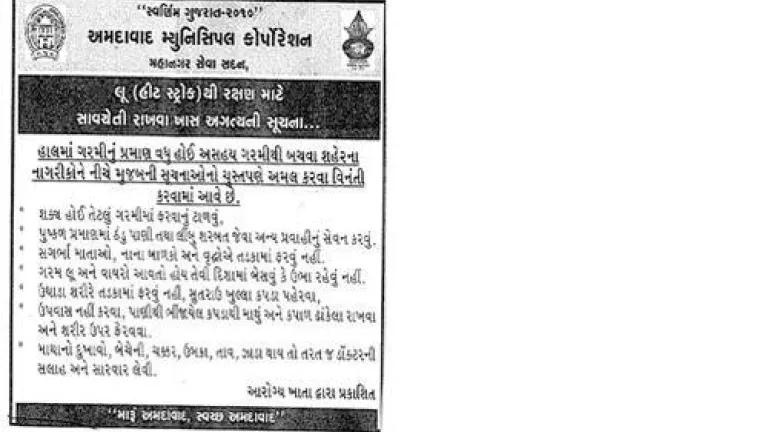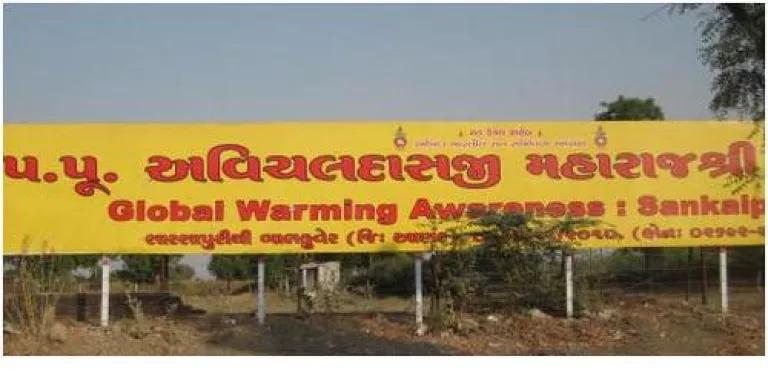
It’s getting hotter as summer rolls around, and because of climate change summers are expected to get hotter each year. In some places, like Ahmedabad, India, as temperatures spike to 115° F (46°C), hospital emergency rooms are inundated with an influx of patients suffering from illnesses/afflictions ranging from heat stroke to heart attacks. During our recent workshop with public health experts from the United States and India (sponsored by the Indo-Science and Technology Forum), it was clear that Ahmedabad’s local officials and community leaders take seriously the risk that increasing heat waves pose for the health of their communities.
During the workshop, we learned about the health impacts of extreme heat, including heat stroke, dehydration, dizziness, heat exhaustion and heat cramps, and the complications extreme heat poses for vulnerable populations such as infants, the elderly, the poor, and outdoor and industrial workers. We also learned about nascent local efforts to educate the public on how to stay cool and protect themselves. One example is the following public health announcement in the local paper:
Translated into English from Gujarati by our partner at PHFI, Puja Thakker, the announcement suggests simple steps for heat-weary residents to take, including:
To protect yourself from heat stroke some important announcements.
When heat increases that is harmful to health, residents are requested to do the following
- avoid roaming around in the heat, if possible
- drink lots of fluids, especially water and lime sherbet
- pregnant women, small children should avoid being in the sun
- do not directly face hot wind storms
- wear loose clothing
- don’t fast
- use a wet cloth to dab your head
- keep your head and forehead covered
If you are dizzy or have a headache, see your doctor.
During the workshop, U.S. participants shared their expertise on public education programs that can really save lives – encouraging people to seek out cool areas, to avoid medicines that exacerbate heat stress, and educating people on the warning signs of heat stroke. Ahmedabad officials shared some of the strategies that they are implementing to respond to heat, while scientists from both the U.S. and India strategized about how to improve data collection on heat health impacts, and devised a framework for conducting vulnerability assessments.
One of the things we learned was that a comprehensive early warning system has yet to be developed in Ahmedabad. Heat warning systems include simple actions like posting daily and projected temperatures so that mothers, children, and the elderly can take protective measures. Other steps include making sure that hospitals receive weather forecasts so that they can be ready for a wave of patients.
In the coming months, we plan to work with our partners in India as well as Emory University to reach out to the Ahmedabad community to better understand the city’s vulnerability to heat, and to build its adaptive capacity and resilience.
Climate change awareness in Ahmedabad is already strong, as you can see from this public education billboard campaign:

Photo by Dr. Gulrez Azhar, Indian Institute of Public Health
We’ll be engaging with city officials and community leaders to translate this awareness into easy action steps to protect public health. We hope to build on this work over the coming months and continue the scientific dialogue from this important heat health workshop.
To learn more about the workshop, here are links to posts from some of the participants:
- “Grandma Knows Best: Traditional Approaches to Beating the Heat Offer Succor to Ahmedabad, India” Dr. Gulrez Shah Azhar and Dr. Dileep Mavalankar of the Indian Institute of Public Health, Gandhinagar (IIPH-G) and Shravya Reddy (NRDC) http://www.onearth.org/blog/grandma-knows-best-traditional-approaches-to-beating-the-heat-offer-succor-to-ahmedabad-india
- “How India is Preparing for the Scorching Heat of Climate Change” Dr. Paul English, California Department of Public Health http://www.onearth.org/blog/india-preparing-for-increased-heat-due-to-climate-change
- “What Americans Can Learn About Heat From Indians” Dr. Perry Sheffield, Mount Sinai School of Medicine in New York City http://www.onearth.org/blog/arrival-and-already-thinking-about-heat
- “Talking About the Heat... Aiming To Do Something About It” Dr. Kim Knowlton, NRDC http://switchboard.nrdc.org/blogs/kknowlton/talking_about_the_heat_and_aim.html
- “Heat and Health: Building Resilience to Climate Change in India” Anjali Jaiswal, NRDC http://switchboard.nrdc.org/blogs/ajaiswal/heat_and_health_building_resil_1.html
